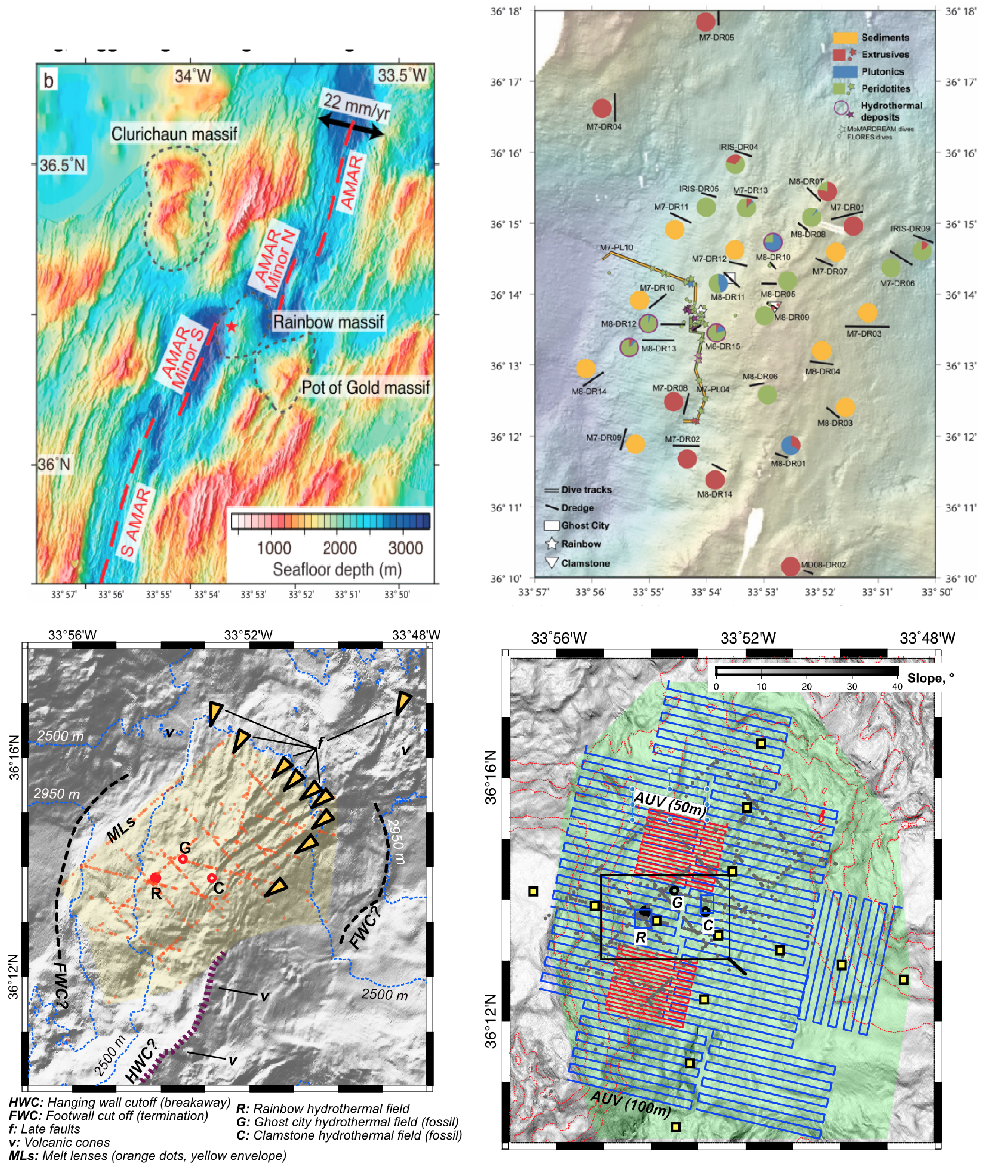Arc-En-Sub
| Type | Oceanographic cruise |
|---|---|
| Ship | Pourquoi pas ? |
| Ship owner | Ifremer |
| Dates | 06/05/2022 - 02/06/2022 |
| Chief scientist(s) | ANDREANI Muriel , ESCARTIN Javier  |
LABORATOIRE DE GÉOLOGIE DE LYON - UMR CNRS 5276 Université Claude Bernard, Lyon1 Campus de la Doua, bât. GEODE 2, Rue Raphaël Dubois 69622 VILLEURBANNE CEDEX +33 (0)4 72 44 84 90 |
|
| DOI | 10.17600/18000663 |
| Objective | The Arc-En-Sub cruise aimed at investigating the nature, history, and functioning of peridotite-hosted hydrothermal systems at slow-spreading ridges. We proposed a cruise targeting the Rainbow Massif (36°14'N MAR) that hosts end-member styles of hydrothermal activity: at least one active site, the acidic high-temperature Rainbow Field, and two fossil ones, the alkaline and low-temperature Clamstone and Ghost City Fields. This cruise was designed to obtain missing data that is key to constrain the interplay between magmatic, tectonic, metamorphic processes, and the contrasting hydrothermal systems, including their impact on ecosystems. Specific cruise goals were:
Geological observations and rock sampling using ROV were conducted throughout the Massif exploiting outcrops along late faults. A systematic optical survey will lead to 3D terrain models providing detailed context for geological observations and sampling, including hydrothermal field areas, while magnetic and water column survey will help locating potential hydrothermal sites. Arc-En-Sub proposed the simultaneous deployment of two AUVs to optimize ship time and data acquisition. Multi-AUV operations required new operational protocols for operations that we expect to become routine for future cruises. Hence this cruise included engineering objectives, notably the development of new methods to improve AUV location at depth. This requires deployment of acoustic transponders installed on seismometers, to combine LBL and USBL locations in AUV renavigation procedures. Cruise results will ultimately be integrated with other available data, such as seismic structure, to inform models of fluid circulation and fluid-rock interactions at the Rainbow Massif in particular, and at peridotite-hosted hydrothermal systems in general. Cruise results will also provide the required understanding of the system that could lead to long-term monitoring, in addition to international drilling.
|

